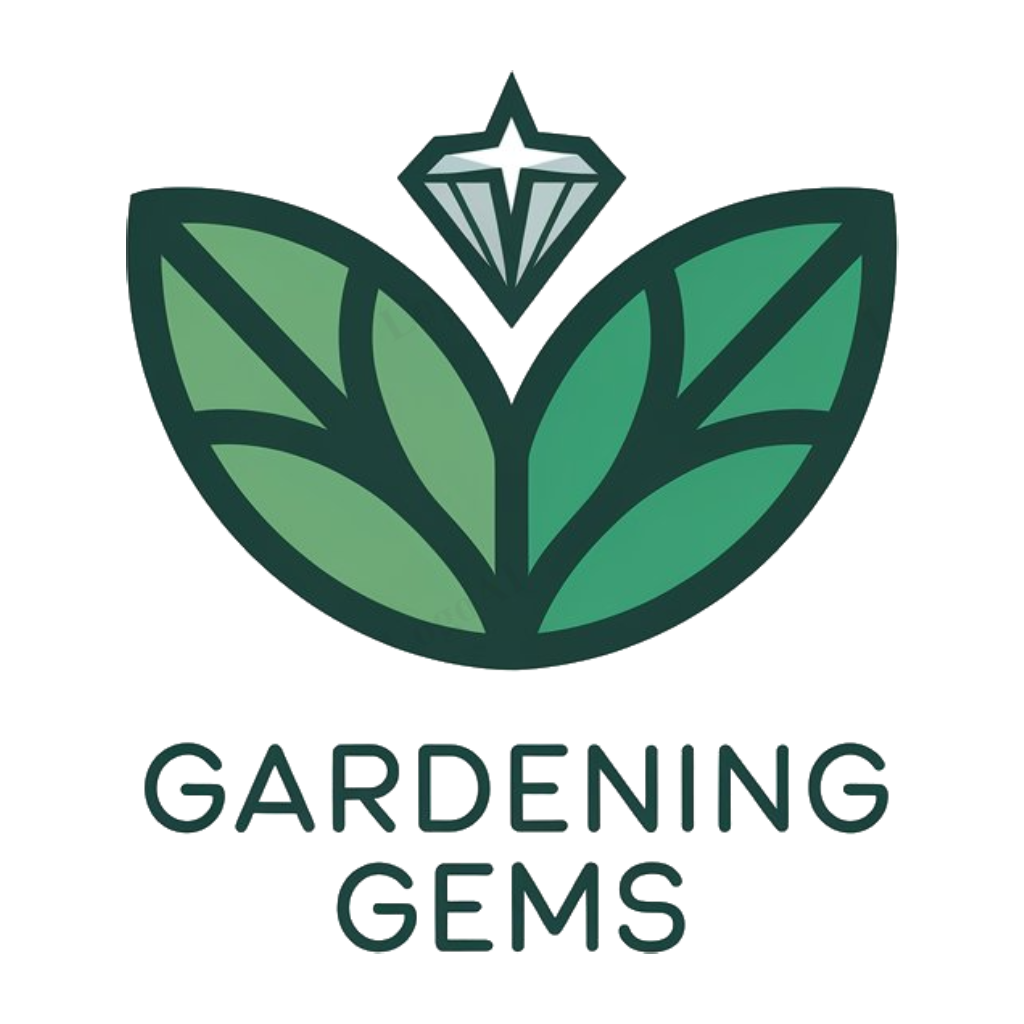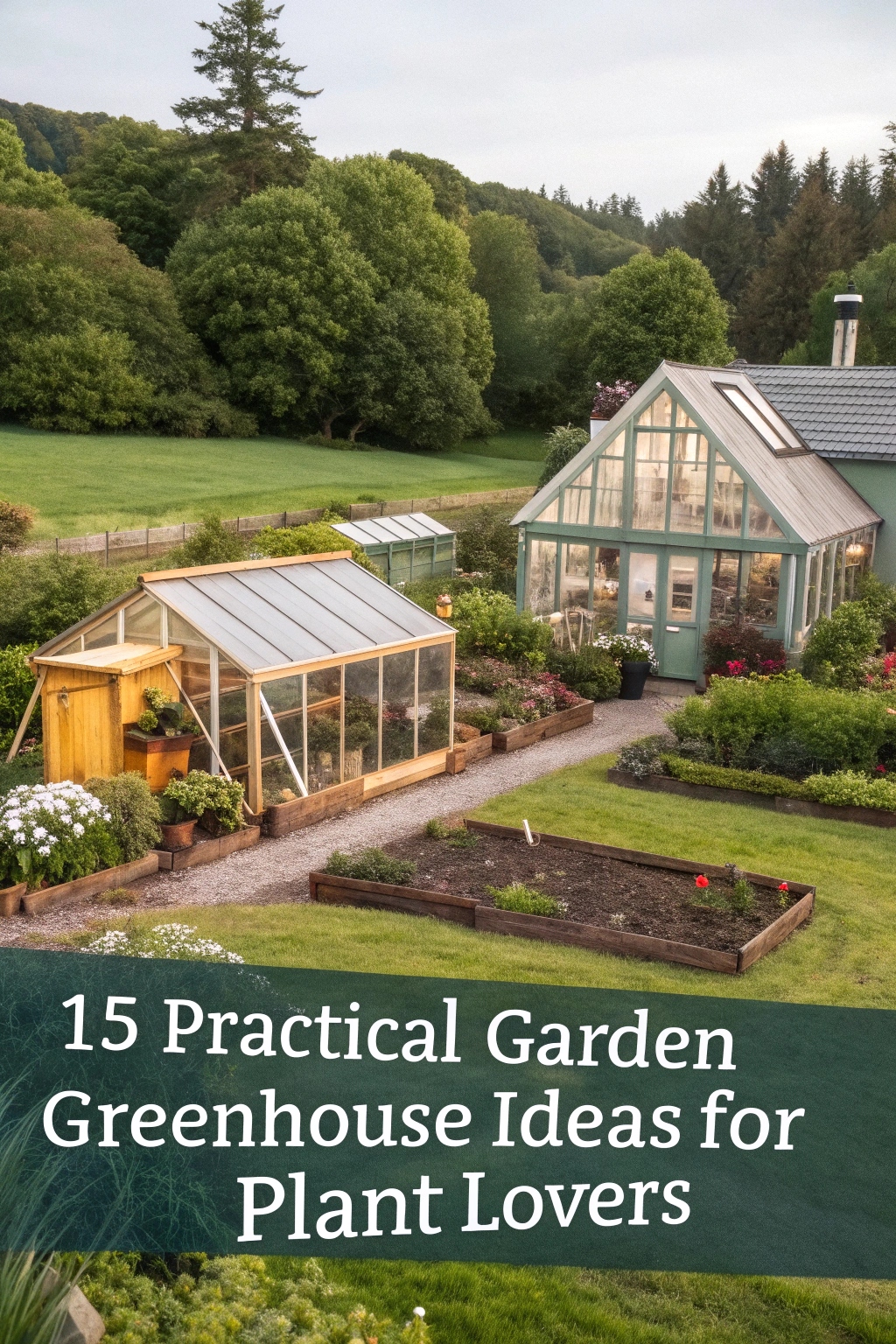Are you ready to grow your favorite plants all year round? Having a greenhouse like the one in Portland’s community garden can be a dream come true. You can harvest vegetables and fruits in every season, and it’s a great way to spend time outdoors.
To get started, you need to choose a good spot, pick the right materials, and design the inside of your greenhouse. Your budget and the space you have will help you decide what features to include. This will be an exciting project, where you get to create your own little garden paradise!
Choosing the Right Greenhouse Location
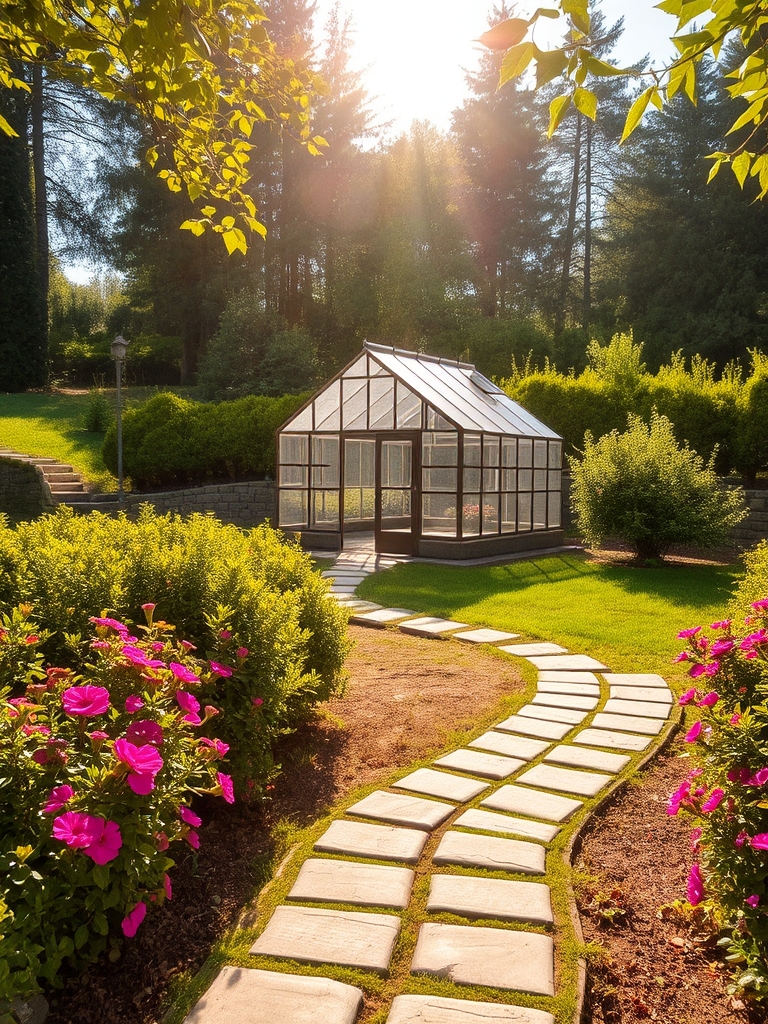
When choosing the right greenhouse location, consider sunlight, wind direction, and accessibility. Ideally, select a spot that receives direct sunlight for most of the day and is protected from harsh winds. Guarantee the location is level, well-drained, and easily accessible for maintenance and daily care.
Selecting the Best Greenhouse Materials

Selecting the best greenhouse materials is vital for a successful garden. Consider durable and weather-resistant options like aluminum, steel, or wood for the frame, and polycarbonate, glass, or polyethylene for the glazing. Insulation and ventilation materials, such as foam board or shading cloth, can also enhance the greenhouse’s overall performance and efficiency.
Building a Budget-Friendly Greenhouse

Building a budget-friendly greenhouse involves using recycled materials, such as old windows and pallets, to construct the frame and walls. DIY kits and repurposed plastic bottles can also help reduce costs. Additionally, using natural insulation like straw bales and opting for a smaller size can make the project more affordable without compromising functionality.
Designing a Functional Greenhouse Layout
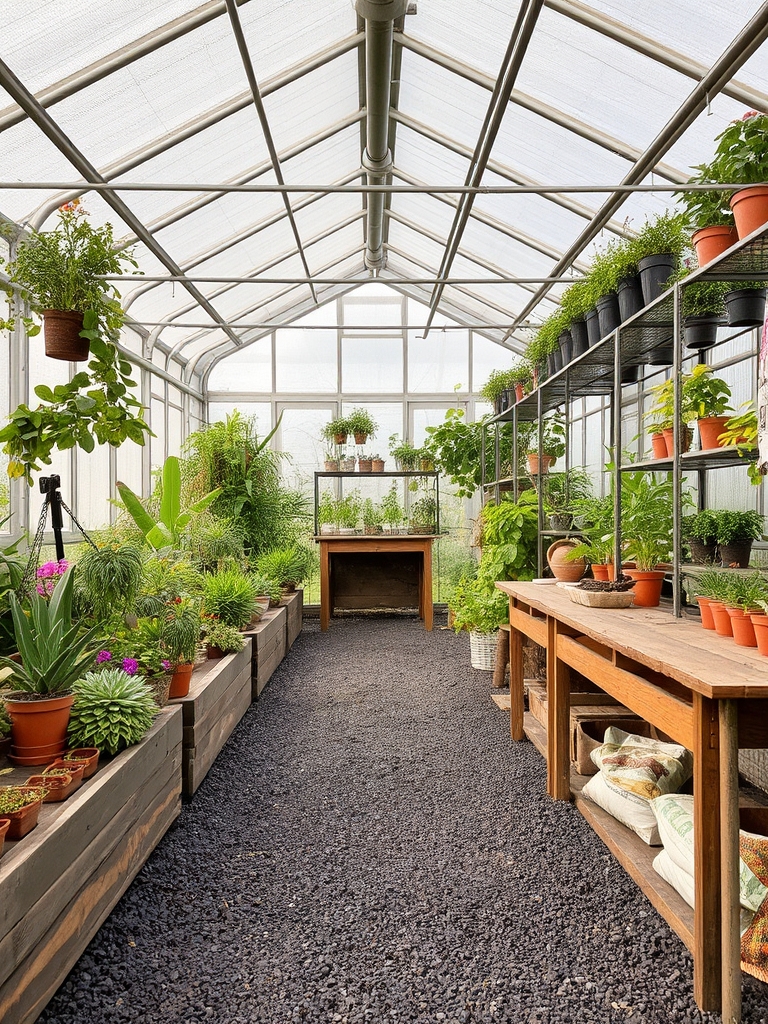
Designing a functional greenhouse layout involves careful planning to maximize space and efficiency. Consider the pathways, work areas, and plant placement to guarantee easy access and maintenance. Shelving, benches, and irrigation systems should be strategically located to promote a productive and thriving greenhouse environment.
Heating and Cooling Your Greenhouse

Heating and cooling systems are vital for maintaining ideal temperatures in your greenhouse. Options include space heaters, insulation, and shading materials to regulate temperature fluctuations, ensuring a stable environment for plant growth and development throughout the year. Automated systems can also be installed to monitor and control temperatures efficiently.
Installing Greenhouse Shelving and Storage

Installing greenhouse shelving and storage is vital for maximizing space and keeping equipment organized. Use sturdy shelves and bins to store pots, tools, and supplies, and consider adding a potting bench for a convenient workspace. Labeling storage containers helps maintain a clutter-free environment, making it easier to find what you need when tending to your plants.
Utilizing Vertical Space in Your Greenhouse
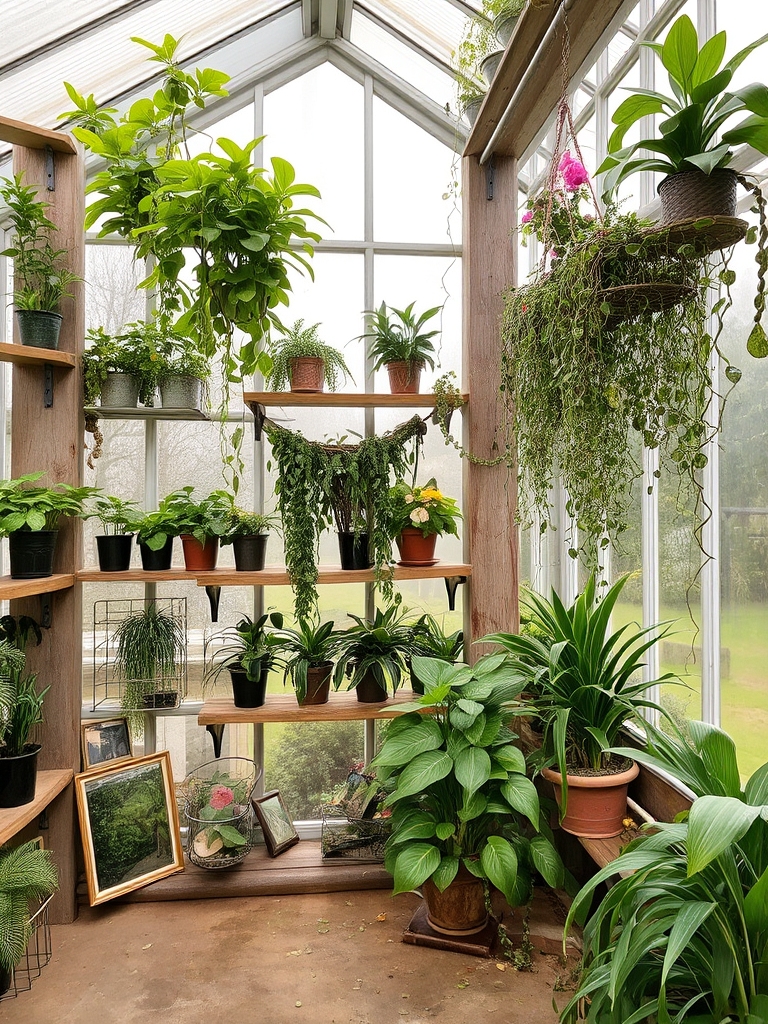
Maximize your greenhouse’s potential by utilizing vertical space with trellises, shelves, and wall-mounted planters. This allows for more plants to be grown in a smaller area, making the most of the available space and creating a lush, layered environment that promotes healthy plant growth and increases overall yield.
Creating a Greenhouse Irrigation System
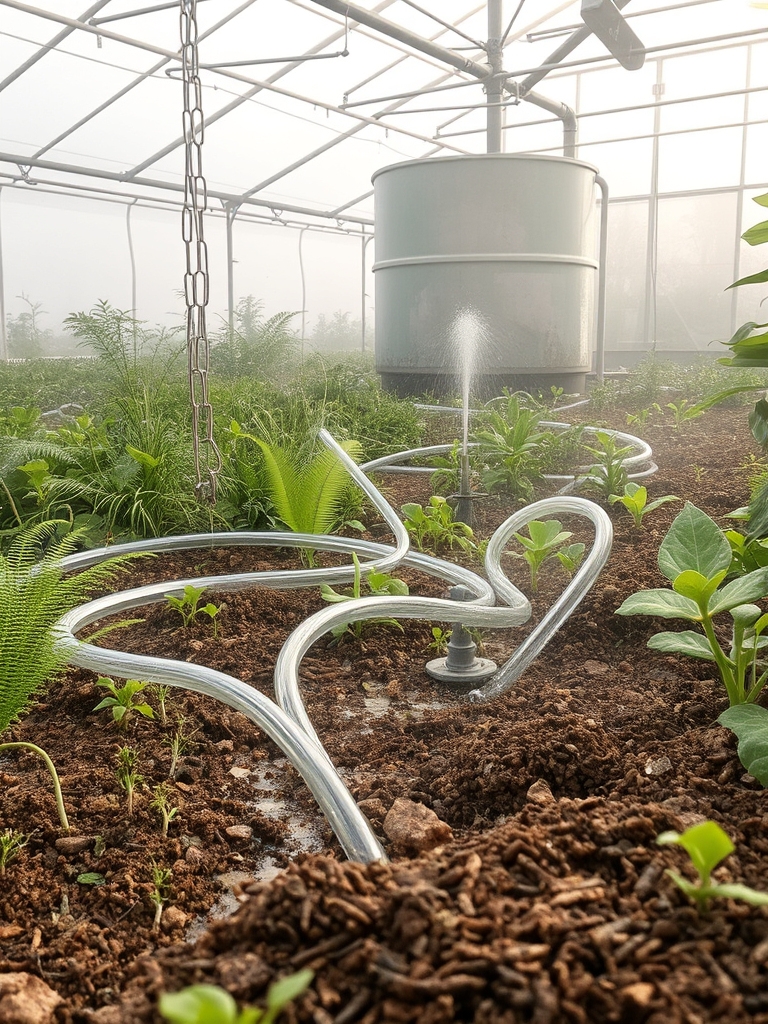
A greenhouse irrigation system guarantees plants receive adequate water and nutrients. Options include drip irrigation, sprinkler systems, and soaker hoses. Consider a rainwater collection system to conserve water. Automated timers and sensors can optimize watering schedules, reducing waste and promoting healthy plant growth. Proper irrigation is vital for a thriving greenhouse.
Managing Greenhouse Humidity and Ventilation

Managing greenhouse humidity and ventilation is vital for ideal plant growth. Proper ventilation helps regulate temperature and humidity, preventing fungal diseases and pest infestations. Automated ventilation systems and manual roof vents can be used to maintain ideal humidity levels, ensuring a healthy environment for plants to thrive. Regular monitoring is necessary.
Controlling Pests and Diseases in Your Greenhouse

To control pests and diseases in your greenhouse, use organic methods like introducing beneficial insects and practicing good hygiene. Regularly inspect plants, remove infected areas, and maintain ideal temperature and humidity levels to prevent fungus and bacterial growth, ensuring a healthy environment for your plants to thrive.
Growing a Variety of Plants in Your Greenhouse

Growing a variety of plants in your greenhouse allows for a diverse and thriving ecosystem. With climate control and protection from pests, you can cultivate everything from delicate orchids to robust vegetables, and even herbs and microgreens, all within the same structure, promoting healthy growth and year-round productivity.
Extending the Growing Season With a Greenhouse

Extending the growing season with a greenhouse allows for year-round cultivation of plants, regardless of external weather conditions. It provides a controlled environment, protecting plants from harsh temperatures, frost, and pests, enabling gardeners to grow a wide range of crops throughout the year, including those that typically thrive in warmer or cooler seasons.
Adding Lighting to Your Greenhouse
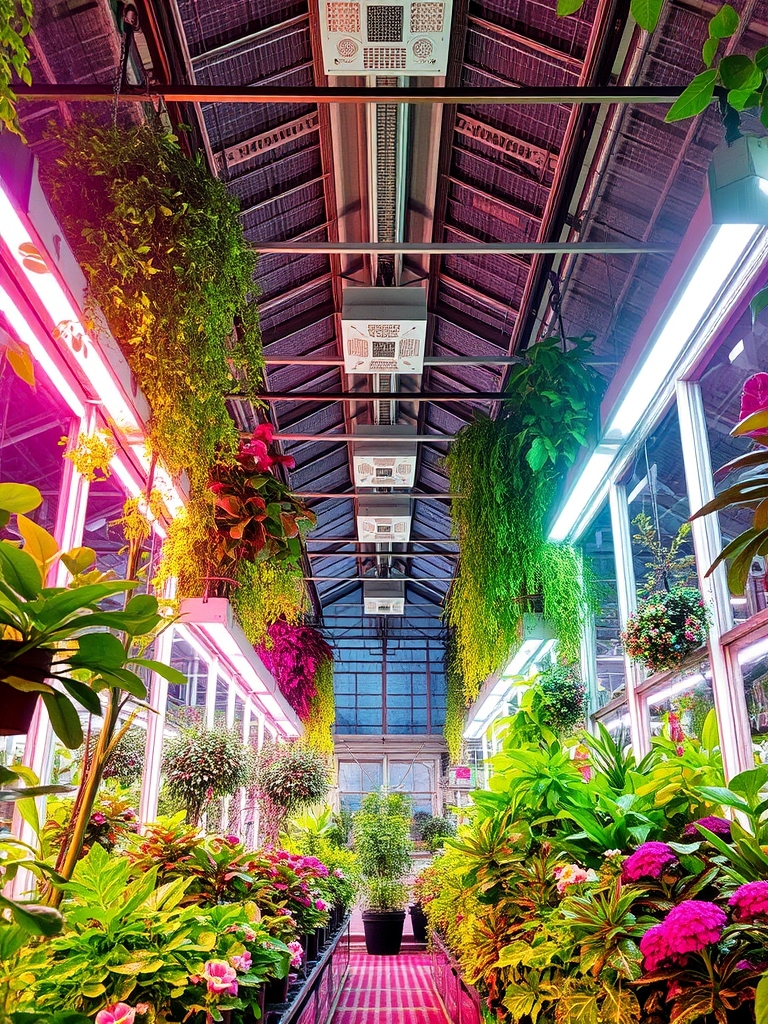
Adding lighting to your greenhouse enhances plant growth, especially during periods of low sunlight. Options include LED grow lights, fluorescent lights, and high-intensity discharge lamps, each with varying spectrums and intensities to support different plant types and stages of development. Proper installation and timing guarantee the best results.
Incorporating Automation in Your Greenhouse

Incorporating automation in your greenhouse can streamline tasks and improve growing conditions. Automated systems can control temperature, humidity, and lighting, ensuring ideal conditions for plants. Additionally, automated watering and fertilization systems can reduce labor and minimize waste, allowing for more efficient and productive gardening. This can lead to healthier plants and increased yields.
Decorating and Personalizing Your Greenhouse Space

Decorating and personalizing your greenhouse space can transform it into a cozy retreat. Add shelves for pots, hang plants from the ceiling, and incorporate decorative elements like stone or brick pathways. You can also include a seating area, statues, or a water feature to create a serene ambiance that reflects your personal style and connects you with nature.
Conclusion
You’ll optimize, automate, and personalize your greenhouse, creating a thriving ecosystem. You’ll design, build, and maintain a space that flourishes year-round, leveraging technology and technique to cultivate a diverse range of plants, extending the growing season, and amplifying your gardening experience.
